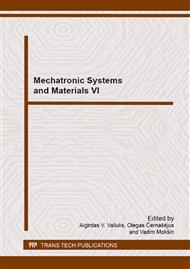p.887
p.892
p.898
p.905
p.911
p.917
p.922
p.928
p.934
Deformation of the Structural Details of the Components Created by the Rapid Prototyping Method
Abstract:
The paper presents the results of preliminary research and describes the deformation of construction details within the process of producing small elements employing a stereolitography system. The article discusses a scheme for changes in data conversion. Variations in construction details have been described on the basis of analysing photographs.
Info:
Periodical:
Pages:
911-916
Citation:
Online since:
January 2015
Authors:
Keywords:
Price:
Сopyright:
© 2015 Trans Tech Publications Ltd. All Rights Reserved
Share:
Citation:


